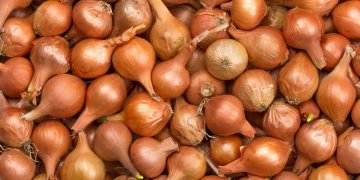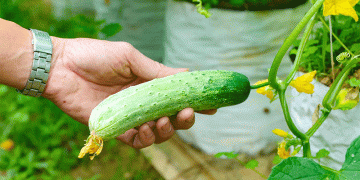Every year the Kazakh people eat more than 315 thousand tons of sauerkraut. In recent years, the price of this product has risen sharply. For example, last year in 2022, among vegetables, the price of akkula onions peaked. People who were very surprised by this took pictures of the price in the store and shared it on the social network. In the end, this was forced to be recognized by the Minister of Agriculture last summer.
“There is a necessary volume of products, there is no shortage in the domestic market. Nevertheless, there was an increase in prices for sugar and vegetable products. Among vegetable products, the price of onions has risen. In this regard, I would like to note that there are enough reserves of onions in the domestic market. So, if the monthly demand is 25.9 thousand tons, the onion reserves in the country are 34.4 thousand tons,” Yerbol Karashukeyev said.
According to the minister, New early-maturing onions are harvested every year, starting in June. Its volume exceeds about 90 thousand tons.
It may sound funny, but the government’s attitude to onions is different. It seems that other vegetables are one hill, onions are one hill. During the pandemic years, for example, its exports were limited by quotas. Farmers and traders who wanted to sell it abroad had to obtain phytosanitary certificates for the export of zhua.
“Those wishing to export onions will be able to obtain phytosanitary certificates from the regional and district territorial divisions of the state inspection committee in the agro-industrial complex of the Ministry of Agriculture. Issuance of phytosanitary certificates takes 5 working days, issuance of quarantine certificates – 3 working days,” the Ministry of Agriculture reports.
Last year, the issue of completely blocking the export of onions began to be discussed. The head of the Ministry of agriculture openly stated that the ministry does not support this issue.
According to the Bureau of National Statistics, in 2022, Kazakhstani agrarians collected more than 1.1 million tons of Zhu. The yield per hectare turned 458.8 quintals. The Ministry of Agriculture assured that this volume “fully meets the needs of the domestic market”. This is due to the fact that every year Kazakhstanis Eat 3 times less than this volume, on average 315 thousand tons of food.
However, at the beginning of the New Year, last week, the Interdepartmental Commission in the government suspended the export of onions from Kazakhstan. In particular, the interdepartmental Commission on foreign trade policy and participation in economic organizations decided to ban the export of onions for a period of 3 months. This is done” to prevent mass export of onions from Kazakhstan and stabilize its prices.”
“The growth of demand for Kazakhstani onions from third countries was caused by natural disasters in Pakistan, one of the largest producers of onions in Asia and the world. The flood in this country led to an increase in onion prices in the markets of the world, including our country. In the southern regions of Kazakhstan, as well as in Uzbekistan, the freezing of products in severe frosts is an additional burden on its cost. As a result, the main producers of onions are now actively importing Kazakh products, the Ministry of Agriculture reported.”
The agency, based on the data of akimats, announced that today the country’s confirmed reserves of onions are 152.4 thousand tons. It turns out that this is only 14% of the total harvest last year. But even this volume is enough until the new product is harvested, the ministry assured.
And the introduced export barrier should prevent the risks of exporting onions from Kazakhstan. The northern neighbor of the Kazakh zhuas is also watching.
“It should be noted that in Kazakhstan the wholesale price of onions is 150-170 tenge per kilogram, in neighboring Russia and Uzbekistan the price reaches 240 tenge. In addition, according to Qaztrade, Uzbekistan and Tajikistan have imposed restrictions on the export of onions in their countries. The government will closely monitor the situation in the country and in the world in order to remove all restrictions in a timely manner in order to improve the market situation in the near future,” the Ministry of Agriculture explained.
The ministry noted that measures will be taken to “reduce the negative consequences of the ban on the export of onions” for farmers who plan to sell part of last year’s rich harvest to neighbors and lose income. But it is difficult to make a lot of income from it: the government began to buy onions from them through social and entrepreneurial corporations to stabilization funds, as well as through trade networks with a circulation scheme. At what price it will be received, it was not specified. Probably about 150 tenge.
For example, in 2022, the ministry, together with the akimats of Turkestan and Zhambyl regions, where “onion plantations” are widespread, worked on the conclusion of contracts between onion producers and akimats of other regions and cities. Then, through negotiations, the sale price of each kilogram of onions was reduced from 220 tenge to 110 tenge.
The next ban was accepted by the business in pain, with a sigh. According to them, 70 thousand tons of Kazakh garbage can rot. “According to the National Chamber of entrepreneurs “”Atameken””, West Kazakhstan entrepreneurs supported the initiative of the authorities in part and expressed their opposition to the ban.”
“The ban will be extended at least until the end of April 2023. Until then, only more than 80 thousand tons of onions are consumed within the country. And 70 thousand tons rot in vain, no one needs it. Farmers will have to throw it in the trash instead of exporting it abroad. Because it is worth considering that it is very difficult to preserve this type of vegetable until May: when spring comes, they begin to sprout. This problem is especially exacerbated in the South. From April 15 to May 1, a fresh harvest of the New Year begins to be harvested in the northern regions. Then how do our product manufacturers pass on the old product?”,- worries the head of the farm “New World” Anatoly Kan.
Expressing the opinion of his colleagues, the entrepreneur proposes to limit the ban on exports to March 20. Then, on the one hand, there will be no shortage of zhua in the country, and its prices will not rise sharply. On the other hand, the producers will have time to sell last year’s grain abroad from the end of March to mid-April, until everyone’s lips touch the new product.
In addition, the business proposed to introduce export duties in the amount of 30-40 tenge per kilogram for the export of onions from the country until April 10, 2023. The proceeds from the duty should be directed to social and entrepreneurial corporations. They will be able to use the same funds for further purchase of new grain from the business to stabilization funds.
“Thanks to this, Kazakhstan will be able to keep the price of zhua at bay. And producers manage to buy last year’s grain without rotting, keeping it smooth. In addition, the revenues from the duty will be directed to support domestic farmers,” Anatoly Kan said.
But the interdepartmental Commission on foreign trade policy and participation in economic organizations has not yet considered this proposal.
In general, Tajik onions will flood the Kazakh country ahead. Nuraly Bukeikhanov, general director of QazTrade, said that they have signed an agreement with Tajikistan on the supply of 6 thousand tons of early grain to Kazakhstan.
“In the off-season, we signed an agreement on the guaranteed supply of 6 thousand tons of early ripe berries to the country. The Tajik side also offered us a tariff discount on the transportation of products by Native Railways. At the same time, the supply of additional volumes of agricultural products from Tajikistan to Kazakhstan is being worked out,” Nuraly Bukeikhanov said.
Tajik agricultural producers promised to ensure the quality and timely delivery of their products.
According to the Center for the development of trade policy “QazTrade” of the Ministry of trade and integration, the meeting will begin in mid-April this year in the Khatlon region of Tajikistan. It is expected that Tajik products will appear on Kazakh shelves in late April – early May.
A source: https://inbusiness.kz
































